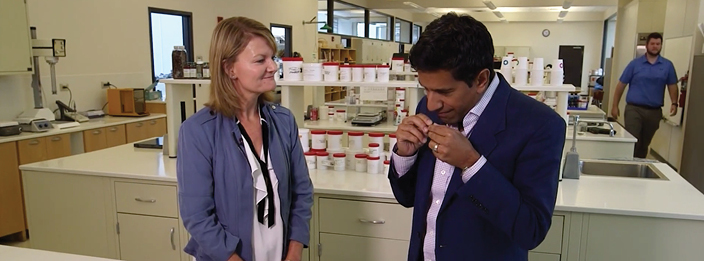
Discover the sense of taste

How changes in flavour preferences are influencing the food and beverages industry.
When it comes to flavour preferences today, some of the key factors are healthy choices and natural ingredients: the concerns surrounding sugar intake; the benefits of a more plant-based diet not just for the sake of animal welfare, but also for the environment; the desire to eat good fats and eliminate bad. Two-hundred-and-fifty years ago, at the start of Givaudan’s odyssey in flavours and fragrances, such considerations were unheard of.
Over the centuries and decades consumer taste preferences have changed dramatically, and will continue to change. It is vital that flavour companies remain one step ahead and help food and beverages companies deliver products that meet ever changing consumer preferences.
“There’s a connection between ‘healthiness’ and ‘natural’ in the consumer’s mind,” says Sophie Davodeau, Givaudan’s Director of Consumer & Sensory Insights for the EAME region. She cites the sugar conundrum: “People don’t want to put on weight, so they choose artificial sweetener because it’s low calorie; but it’s not natural, so there’s a conflict of interest.” Hence the proliferation of natural sugar-substitutes, like honey, maple syrup and agave syrup. Similarly, every supermarket now sells sausages, burgers, made not from meat, but from plants. Choosing a vegetarian diet no longer means the reliance on animal protein that it did 20 years ago, and the steady rise of veganism as well as new concepts of flexitarian and reducetarian means providing delicious ways to enjoy plant-based protein is a priority.
“Taste preferences are generally instinctive,” says Kim Juelg, a Senior Flavourist at Givaudan. “They’re defined by our genes and our environment, the culture that we’re in. Babies in the womb tend to like what their mothers eat, and from a cultural standpoint the globe has got much smaller, people can travel to places much more easily, so that also obviously influences people’s tastes. We’re much more likely to be able to try new things.”
Watch the sense of taste animation
The rise of globalism has been influencing taste preference for centuries. In the 14th century the development of the culinary artform truly began, spurred on by newly-available exotic products such as tomatoes, potatoes and cocoa which experts could develop into increasingly complex recipes. The new combinations offered by foreign flavours would continue to be refined over subsequent centuries – by people such as 18th century gastronome Brillat-Savarin, who sought to take advantage of new flavour opportunities in a smaller, more connected world.
The pace of change in taste preferences means that flavour companies like Givaudan are more vital to customers than ever.
“Until a few decades ago we had local customers that made food for local consumers. Things have changed. Some customers could be very small and based in London, for example, but with improved transportation and the rise of e-commerce, they can sell in Turkey or Ghana. Thanks to our global footprint they can rely on a company like Givaudan to give them understanding of local taste. Our role is to provide insights on the local consumers and what it’s going to take to delight them before they start developing a new product.”
Sophie, Director of Consumer & Sensory Insights EAME
The science of taste is also constantly evolving. For example, if the current research into the possibility of the tongue having receptors for fatty, metallic and soapy flavours – as well as those for salt, sweet, sour, bitter and umami – provides positive results, the potential for providing nuances of flavour and flavour combinations will increase dramatically. It’s an exciting time to be working in the flavour business.
